The XLNC utility skiff, William and John Atkin’s design No. 681 of June 1951, was drawn up for a “How to Build” article in Motor Boating, part of a monthly series the magazine ran for several years. My boat, RAVENSTRIKE, is true to the plans as to the LOA of 19′ 2″, LWL of 18′, maximum beam of 4′ 4″ and maximum draft at the rudder (which we protected by a stainless-steel bracket) of 14″ including the bracket.
From the basic plans, however, I departed somewhat and installed fore, side, and aft decks with fore and side coamings, which added some weight. I also installed a side steering wheel in lieu of a tiller. Given that I grew up with fast outboards and racing sailboats, I long ago gave up on the quest for speed, so with the extra weight, instead of the designed 13½ mph, I reach somewhere, with the boat’s present engine, around 10 mph with one person aboard, but I usually run at a pleasant cruising speed of 6 or 7 mph.
What I seem to have created is a rather elegantly disguised flat-bottomed skiff, although on a trip to a giant cypress swamp in the Atchafalaya Basin in Louisiana, we set catfish trot lines and generally made a mess of the boat while we were there. It served its purpose well, however, in addition to attracting a lot of attention.
The plans specified a 6-hp Baby Palmer Husky, which was not readily available at the time I built the boat in 2000. I originally installed an air-cooled Honda V-Twin, coupled to a spare Hurth transmission I had on hand. For someone using this boat as a true utility skiff and living in a cool climate, I believe the Honda would be an excellent choice for power, being inexpensive, lightweight, and very reliable. However, I couldn’t handle the heat it generated here in Florida, so I replaced it with a three-cylinder Yanmar diesel with keel cooling and water-cooled exhaust, pretty much the way Robb White did with his RESCUE MINOR (see WoodenBoat No. 189).
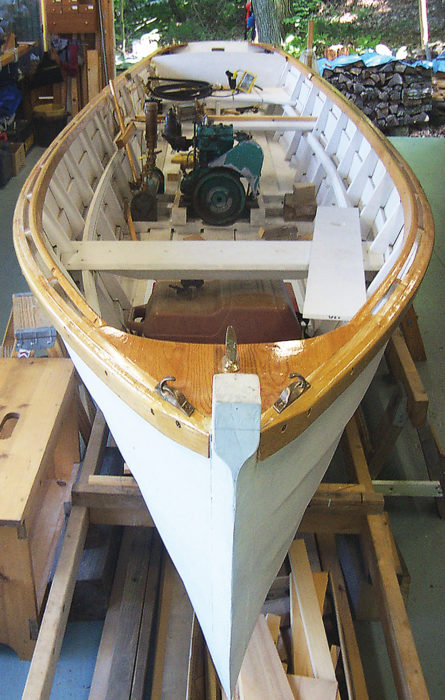 Courtesy Bill Oakes
Courtesy Bill OakesBill Oakes, a summer resident of Harpswell, Maine, built his AURELIA B to be faithful to the Atkin XLNC open-boat design in every detail but one: he installed a “side stick” steering system, visible at left, instead of using a long tiller.
Before we took the Honda out of the boat, we did take off the governor for a high-speed trial and achieved 91⁄2 knots, close to the designed speed. In my opinion, to reach the designed speed the most important issues are meticulous fairing of the skeg and the installation of the proper propeller for the installed engine.
It is difficult to follow an older designer’s advice not to overpower, which is clearly set forth in the Atkins’ comments. The engines available today are quite different from those of the early 1950s in terms of real horsepower, torque, and, obviously, availability. The Yanmar, while much more than necessary in the power department, is, however, quite reliable and very economical to operate.
RAVENSTRIKE was lofted and built from the plans and table of offsets. She is planked with cypress, built clinker (also called lapstrake) style, with plank laps fastened with copper rivets. Her frames, stem, chines, and transom are mahogany. The bottom is cross-planked, fastened with silicon-bronze screws. Other than the laid decks and coaming, the construction is straightforward and simple. A word of caution, however: If you cross-plank the bottom, as it should be done, be sure to use narrow planks to prevent cupping if you plan to keep your boat in the water; and by all means, if you keep your boat on a trailer, do not forget to wet the bottom so it can swell up before launching. You will be amazed at how much water can come into a dried-out cross-planked boat when launched, and how long it will take to swell up to stop an inflow of water.
When reading the designers’ comments, it seemed appropriate to quote them as to the intended purposes of the design before making my own observations. Quoting from the “How to Build” Motor Boating article:
As time unfolds, motor boats of much less breadth in proportion to length than those now in the mode will become common. Among the reasons for this switch from broad beam to narrow beam will be: with equal displacement and power the narrow beam boat will be the faster of the two; for equal displacement the slim-lined hull will be the easiest of the two models to build, and therefore the cheapest; in general use, providing the design is properly made, the easy-lined narrow boat will behave best in rough water, it will throw far less spray and water, handle better in a following sea, and when slowed down, will not pound, and therefore be more comfortable than any of its two and a half to three beam sisters…. Yes, shipmates, there is a great deal to be said for the performance of reasonably narrow round bottoms, V bottoms, and flat bottom boats; slim ladies that go about their work without fuss and bother; neat sisters that deserve the name of excellency.
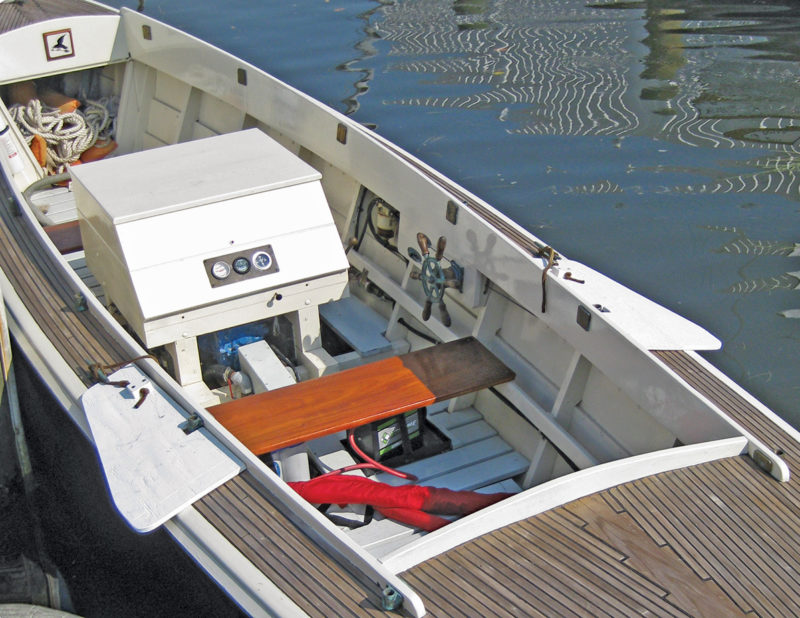 D. Turner Matthews
D. Turner MatthewsThe author also went with a side-steering system for his decked-over XLNC, using a wheel instead of a vertical tiller.
XLNC certainly meets the criterion of narrow. The widest part of the bottom is 3′ 6″ ; at the stern it is slightly more than 2′ ; and at station No. 2, the breadth of the bottom is but 18″.
As for my own observations, I would have no argument with any of the Atkins’ comments. Over the years since her launching, I have operated RAVENSTRIKE in a variety of locations in varying degrees of weather. In the Louisiana swamps, the water—as you would imagine—was very calm, the only concern being not with the boat but the possibility of getting lost. As to its behavior in following seas, my best experience occurred coming into the Caravel River from Apalachicola Bay with a fol-lowing sea breeze. The boat tracked straight and true despite the following waves meeting up with the outflow of the river. My home waters are the Manatee River and Tampa Bay, which frequently have a moderate chop, which is handled with ease. While I do use the boat in those waters, I much prefer to sneak away to some inland river, such as the St. Johns or the Ocklawaha, and cruise around slowly with only the slightest of disturbance to my surroundings. RAVENSTRIKE’s ability to be easily trailered to distant places is one of her real attributes.
In summation, RAVENSTRIKE has given many joyous hours on the water in a variety of places we couldn’t or wouldn’t go in a larger boat. In addition to this, she has performed as the designer predicted. I will be the first to admit that I made her more complicated than necessary, but that only proves the design, as she still performs as intended. I have also been guilty of trading off utility for aesthetics on more than one occasion. For this I make no apologies, because to the degree possible, boats are, or should be, an extension of ourselves as well as sometimes being a useful and creative form of self indulgence.
What should be most important, however, is the joy that is created by the use and sharing of these graceful symbols, regardless of their shape, size, propulsion, or use. ![]()
Plans for XLNC, Design No. 681 from William and John Atkin, are not currently available through Atkin Boat Plans, due to the death of Pat Atkin in 2022. Plans will be offered in the future from Mystic Seaport.
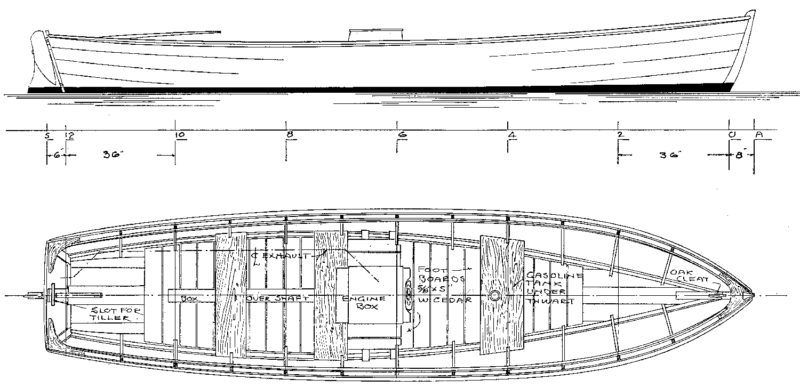 Atkin Boat Plans
Atkin Boat PlansThe Atkins designed a long, lean hull to be easily and efficiently driven by low power, characteristics that make the boat not only comparatively easy to build but also inexpensive to build and use and well-behaved on the water. Particulars: LOA 19′ 2″, LWL 18′, Beam 4′ 4″, Draft 1′, Designed power 6 hp
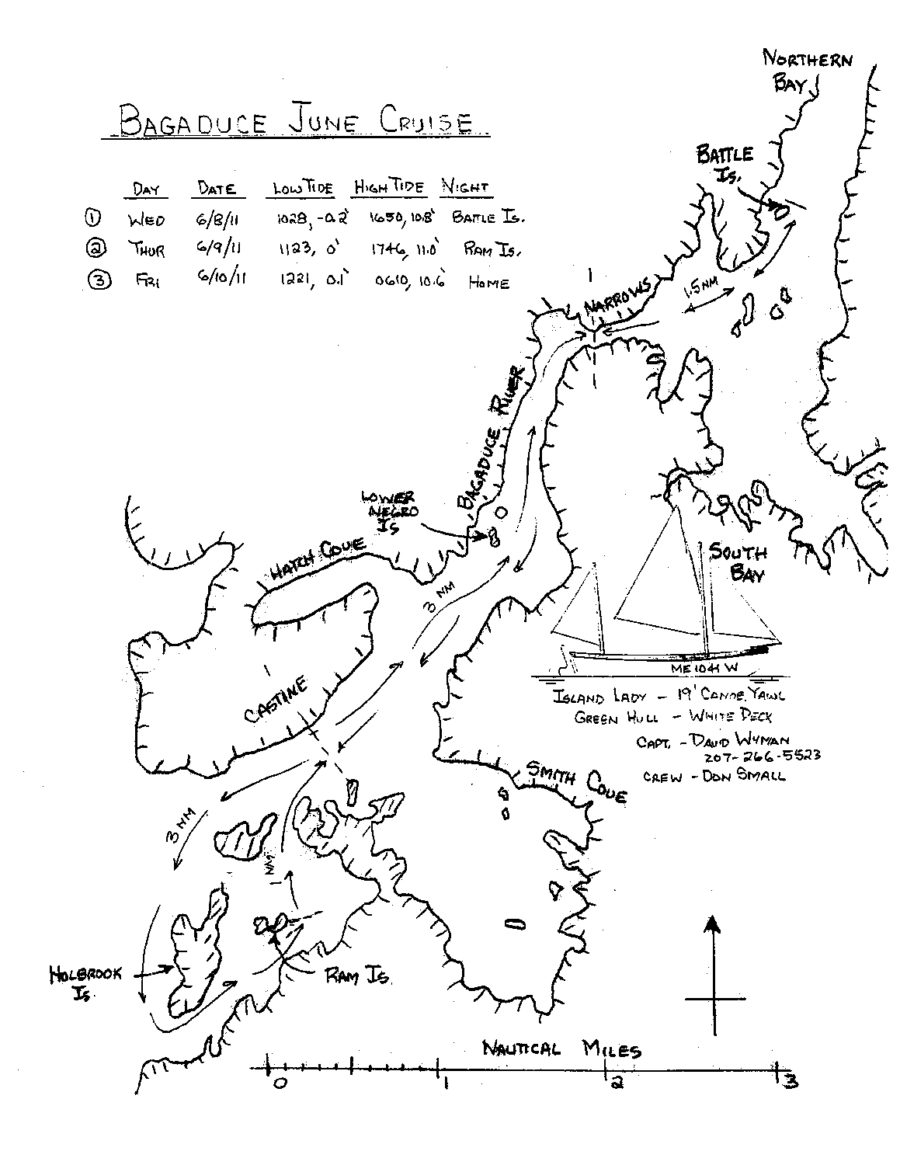
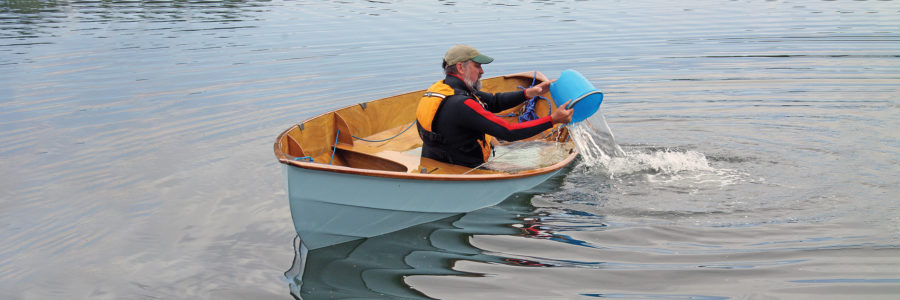
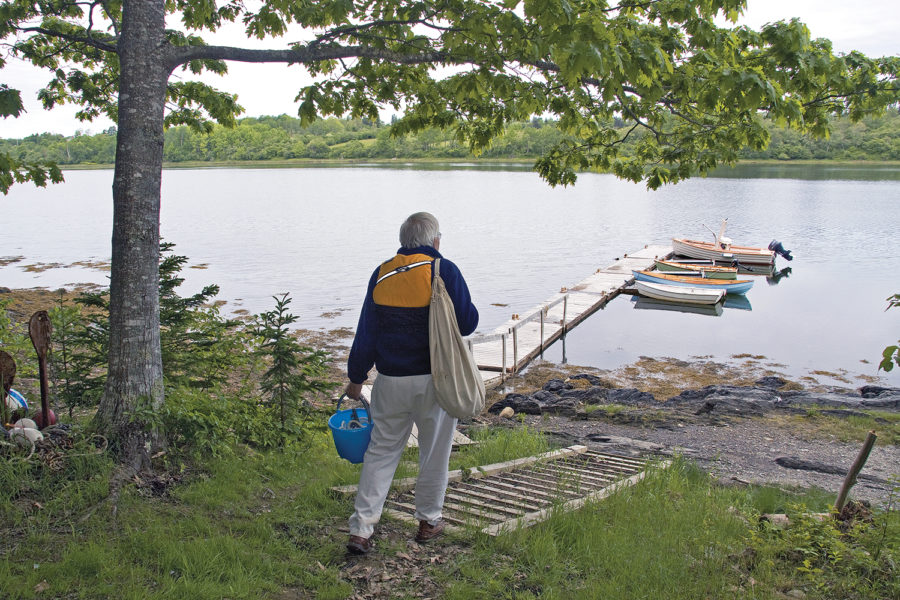
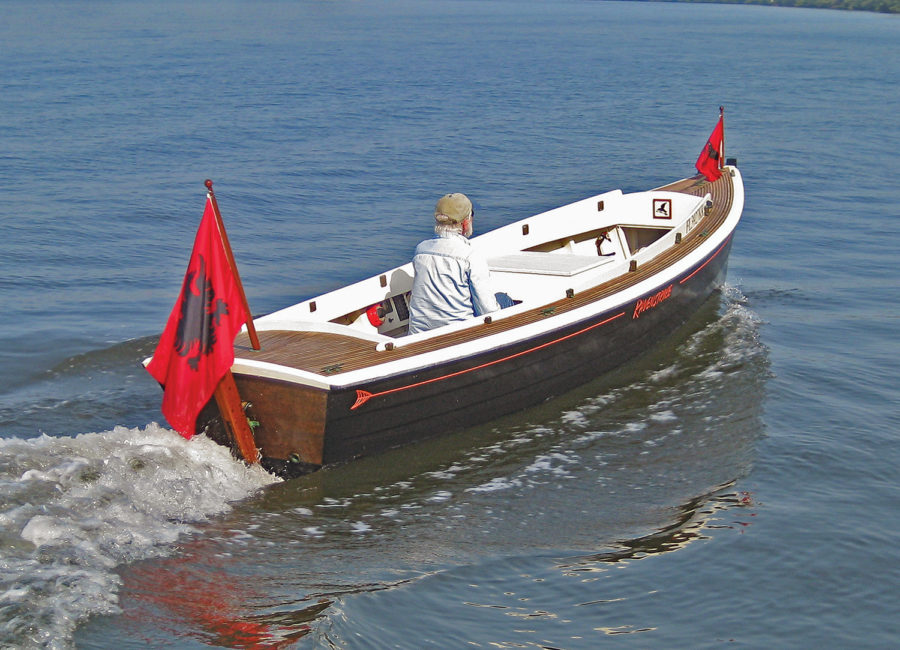
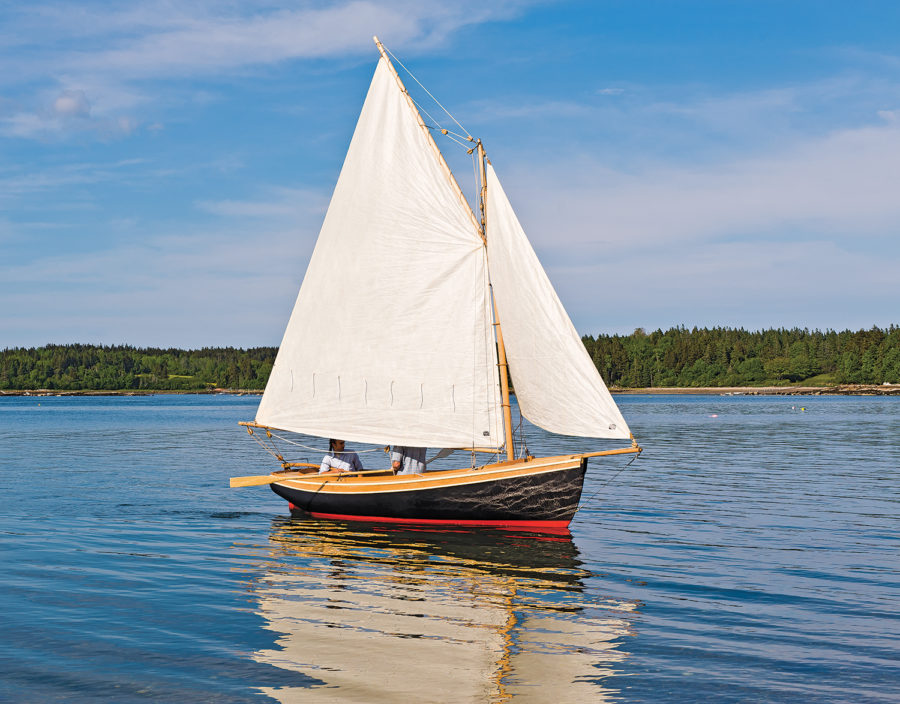
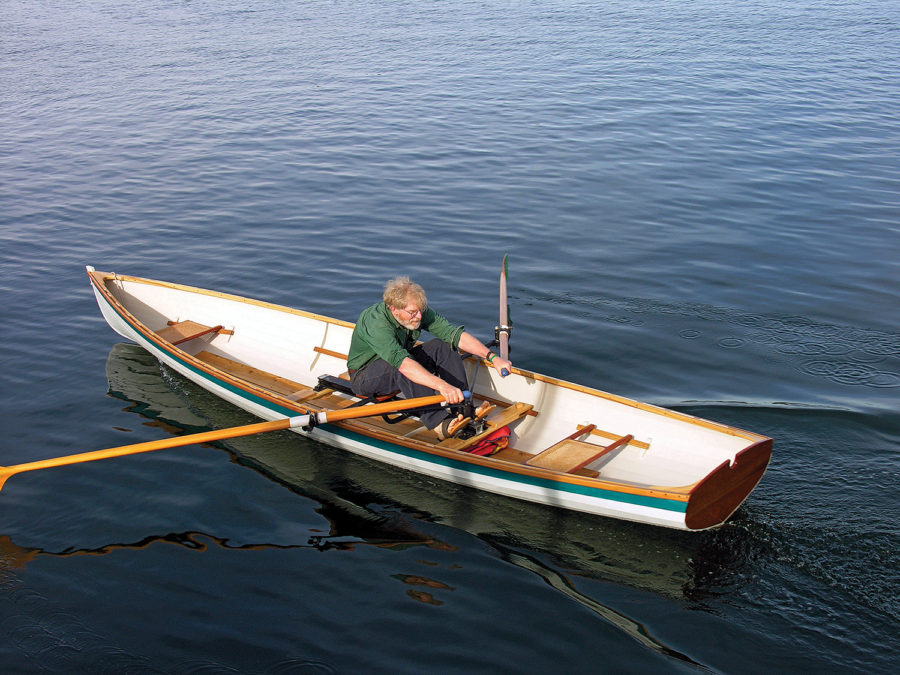
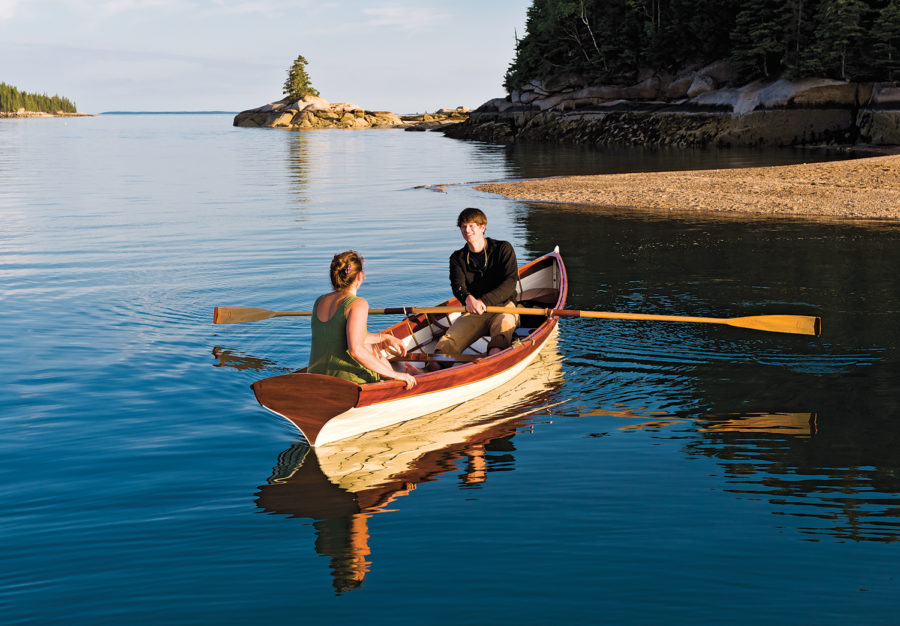
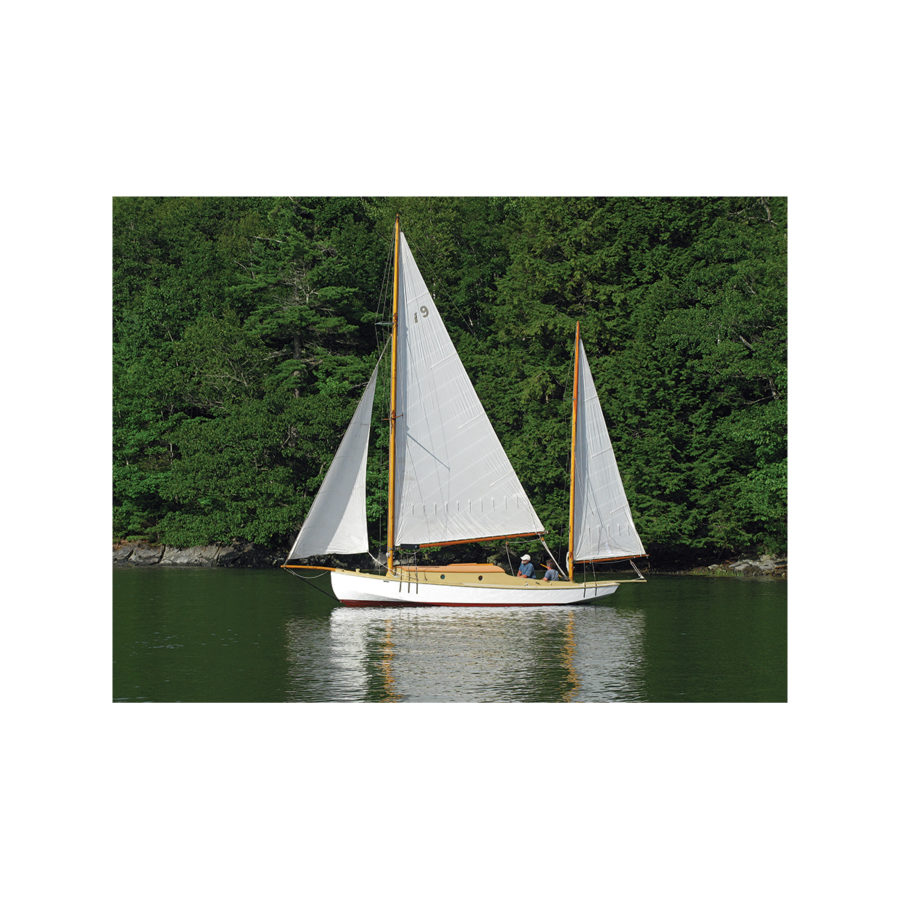
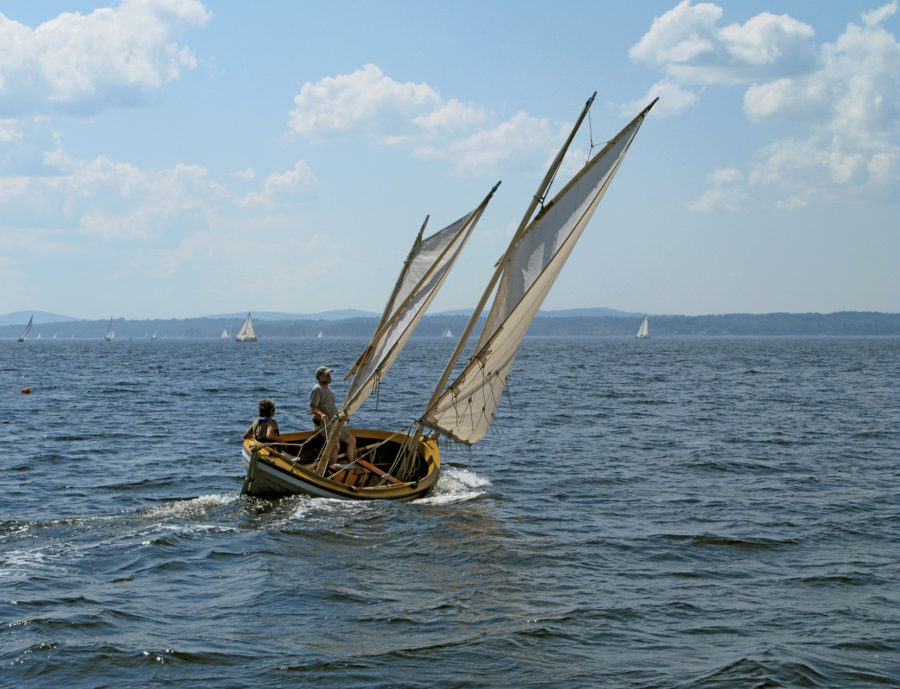
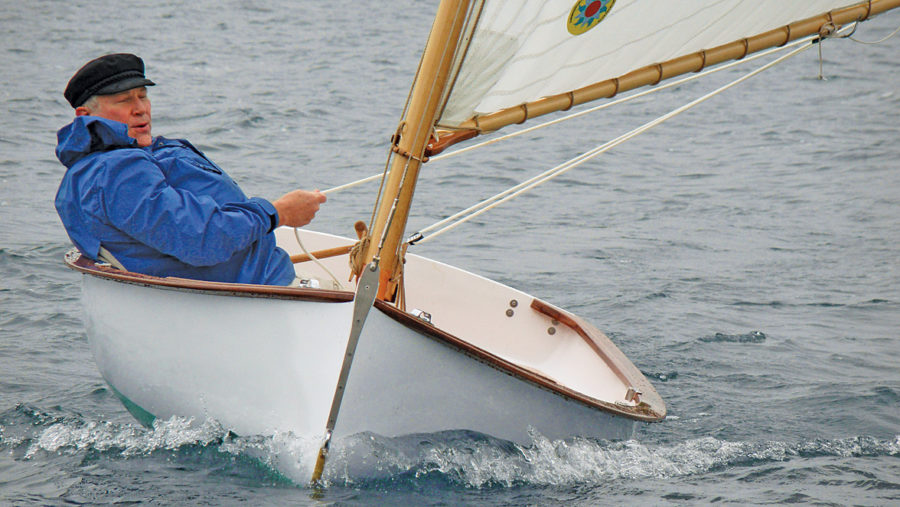
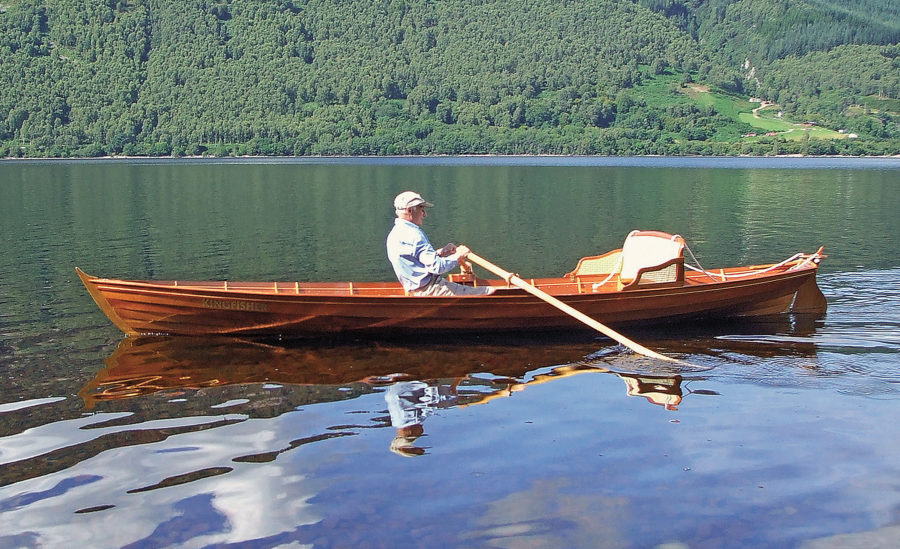
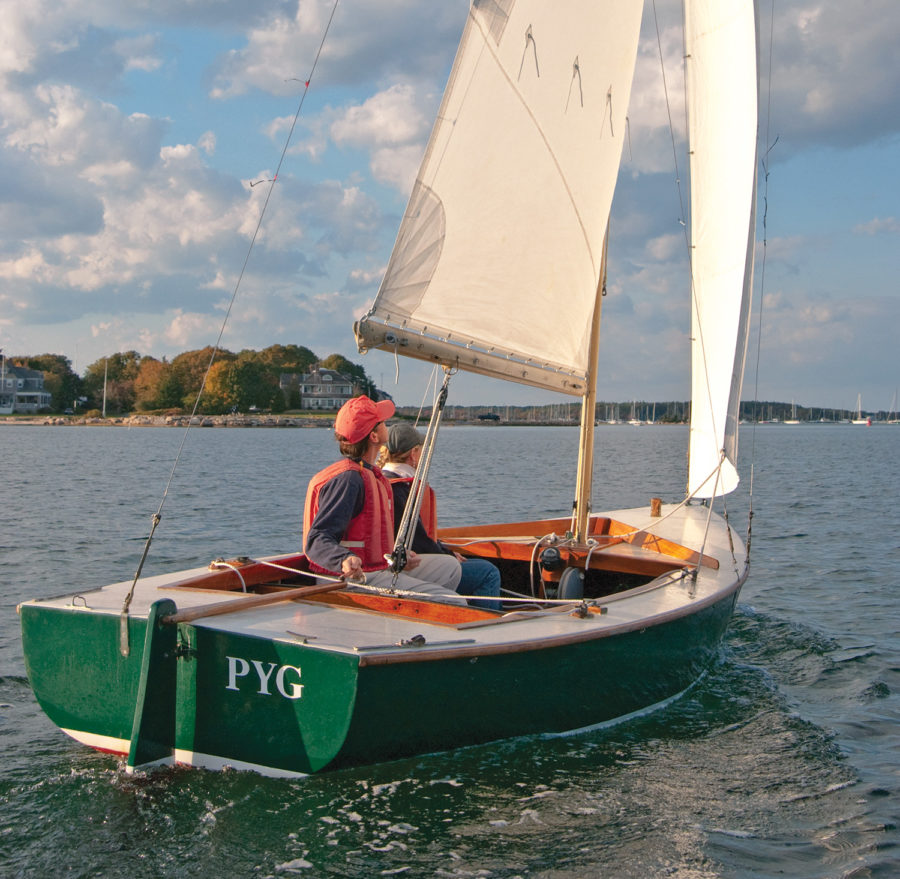
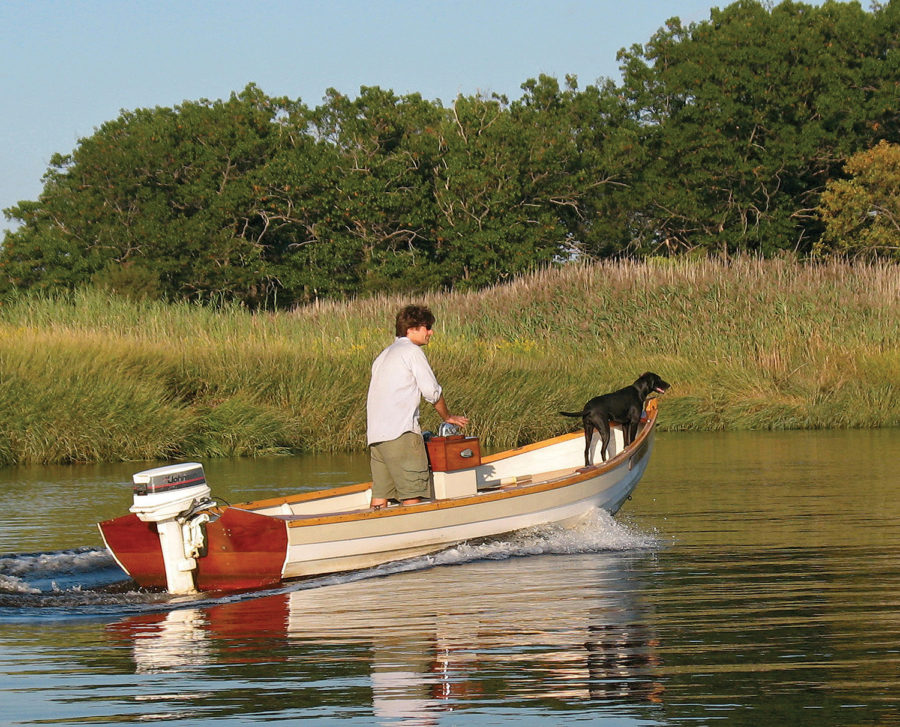
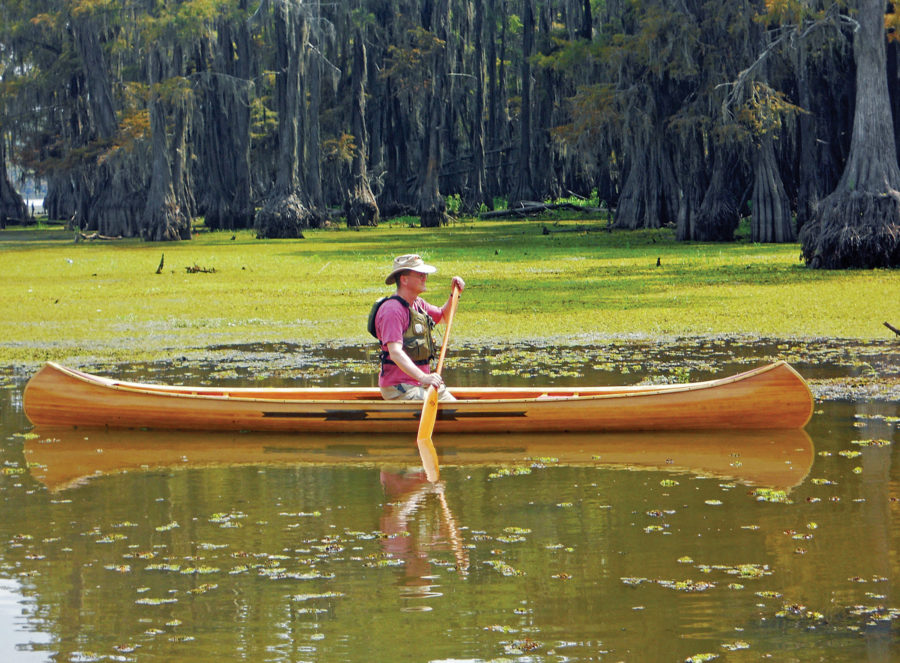
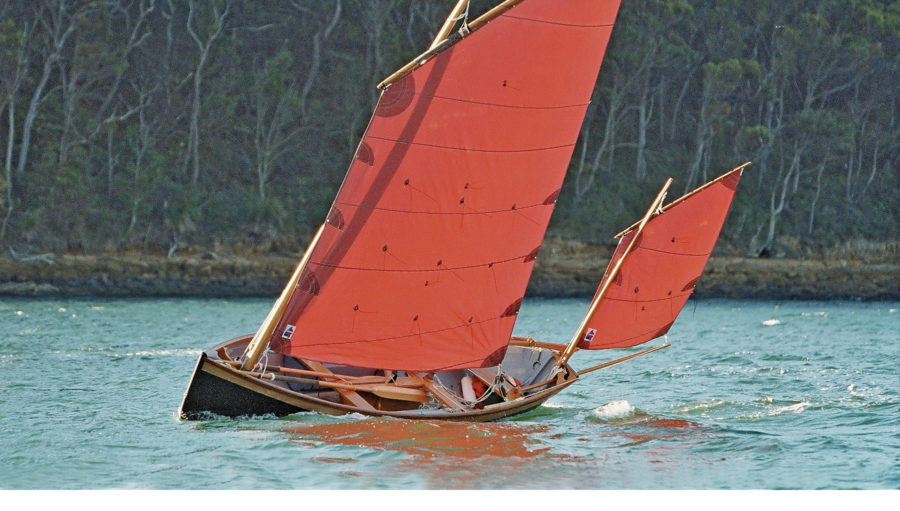
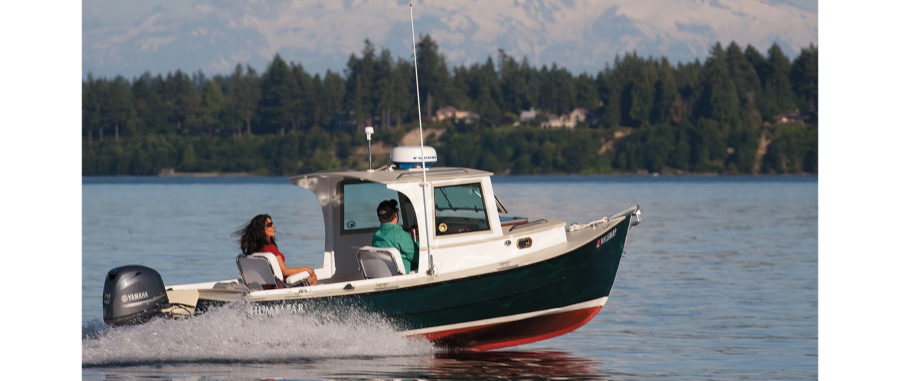
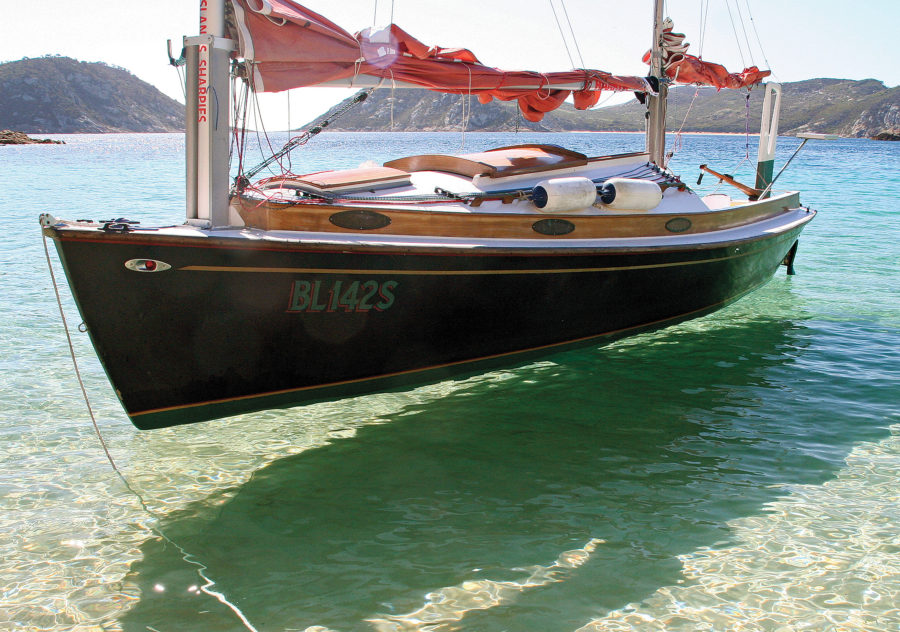
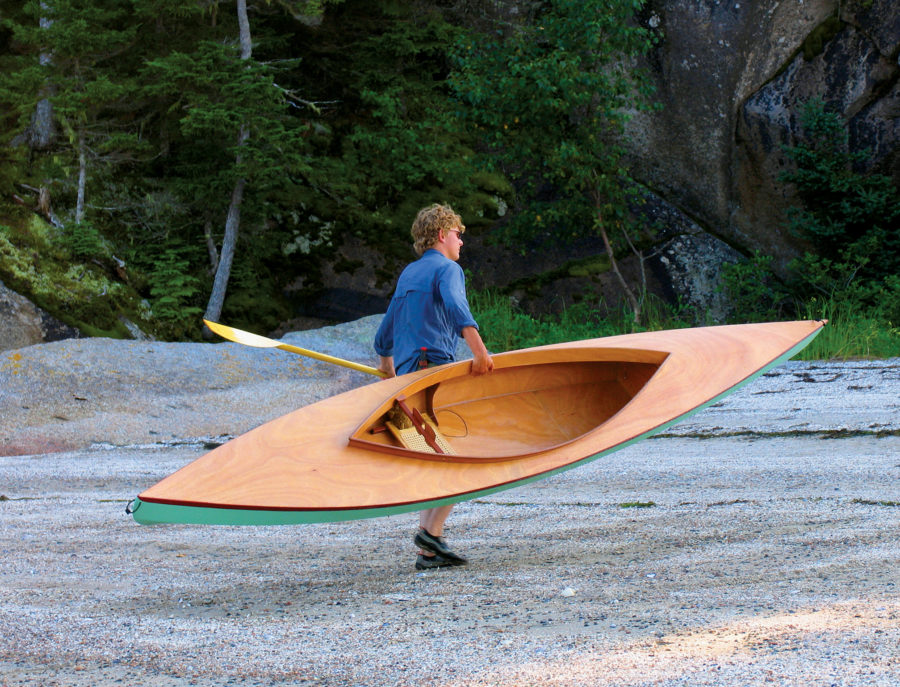
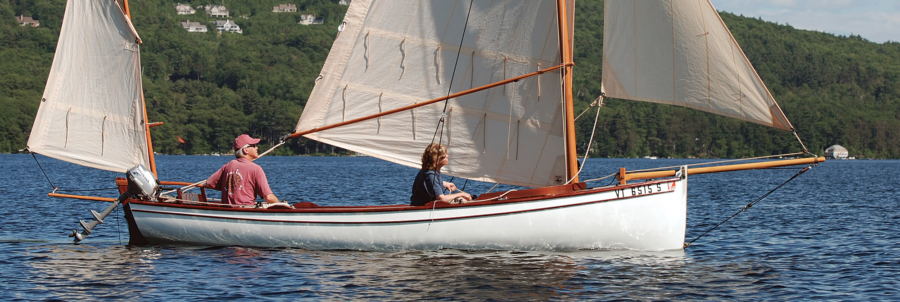
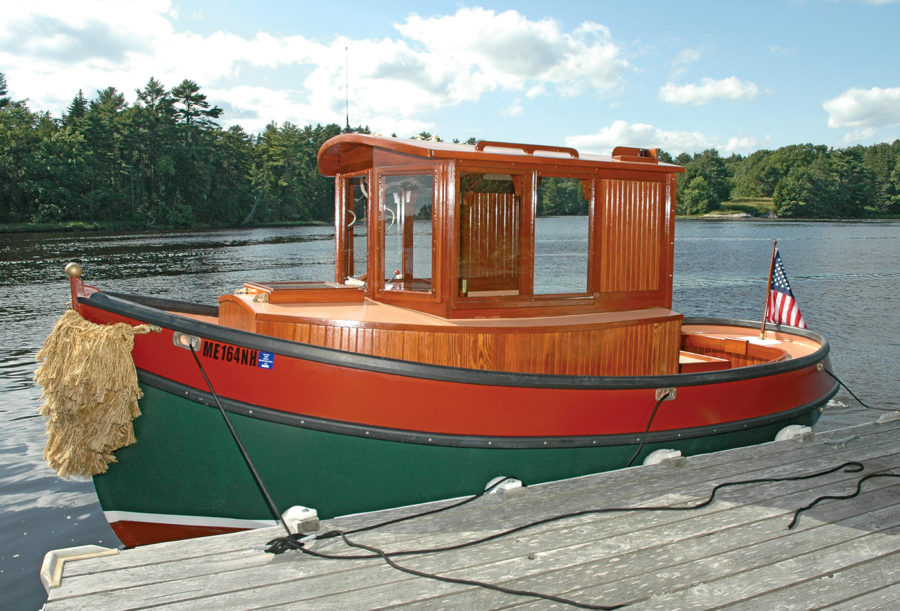
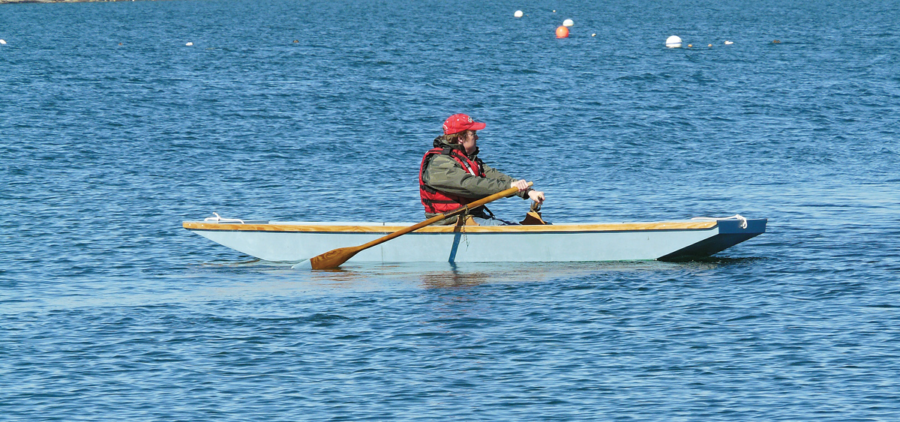
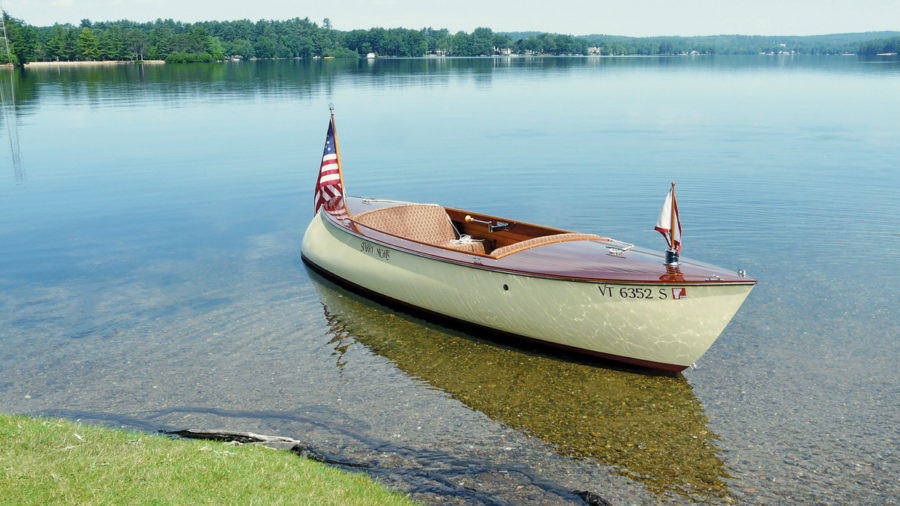
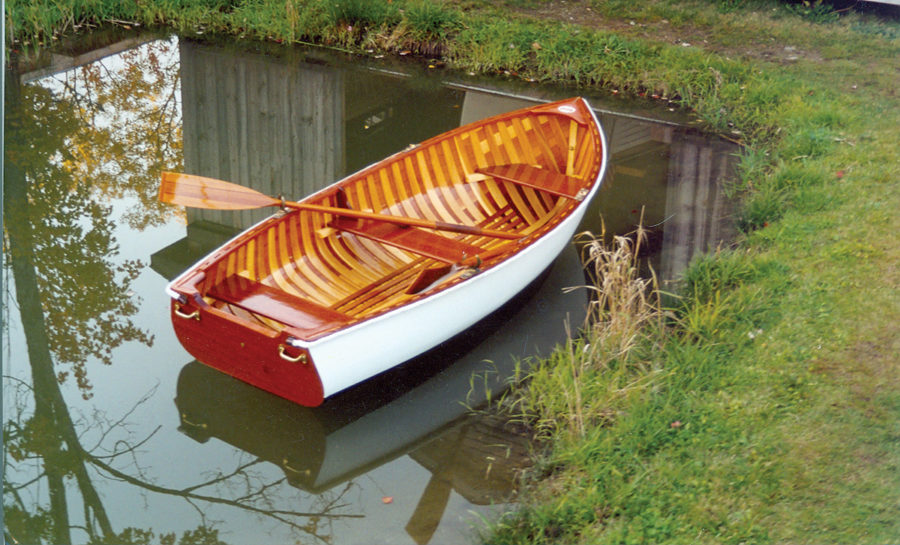
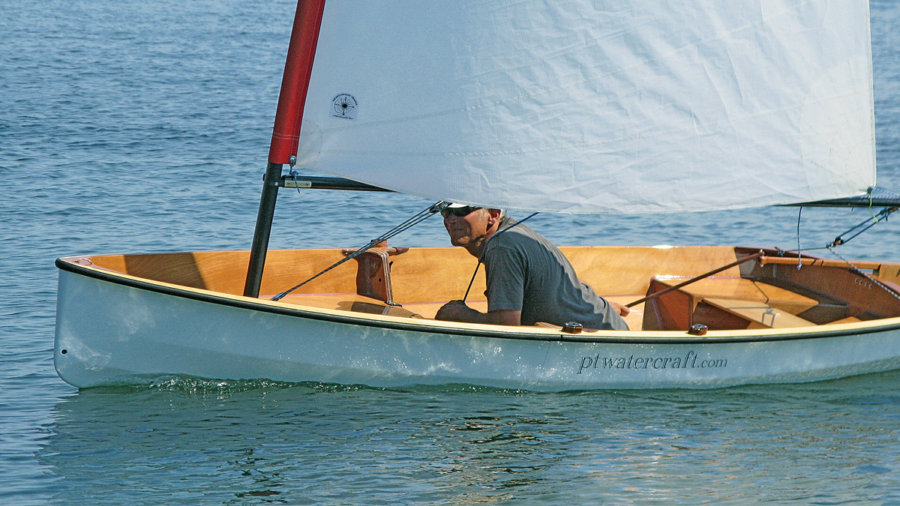
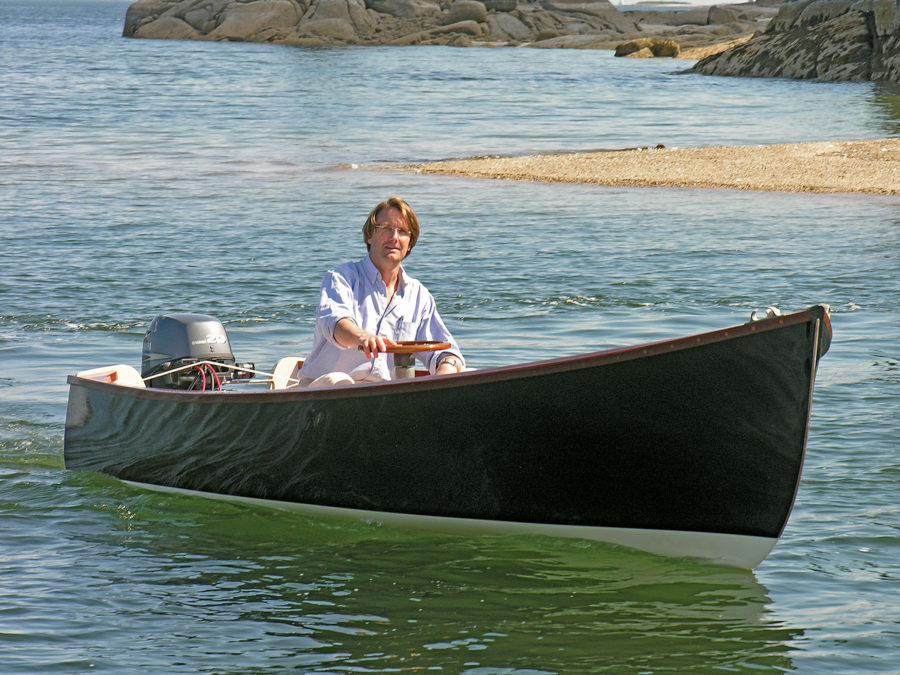
A lovely example of a good, honest boat. But I should like to know why she carries what looks like an Albanian flag.
OK, you stumped me…what are the 2 thingamajig white things sitting on the side decks? Thingamajigs-yes, I like to be specific in my use of nomenclature…ha ha
In the on-the-water picture, there are two white panels on the side decks. They are shaped like they might be floor boards, but they have cut outs and lanyards like they are designed to be mounted where they are. What are they?
G McGee
My guess is that they are for cleaning fish. The lanyard makes them easy to rinse overboard.
They’re leeboards, for sharp turns.